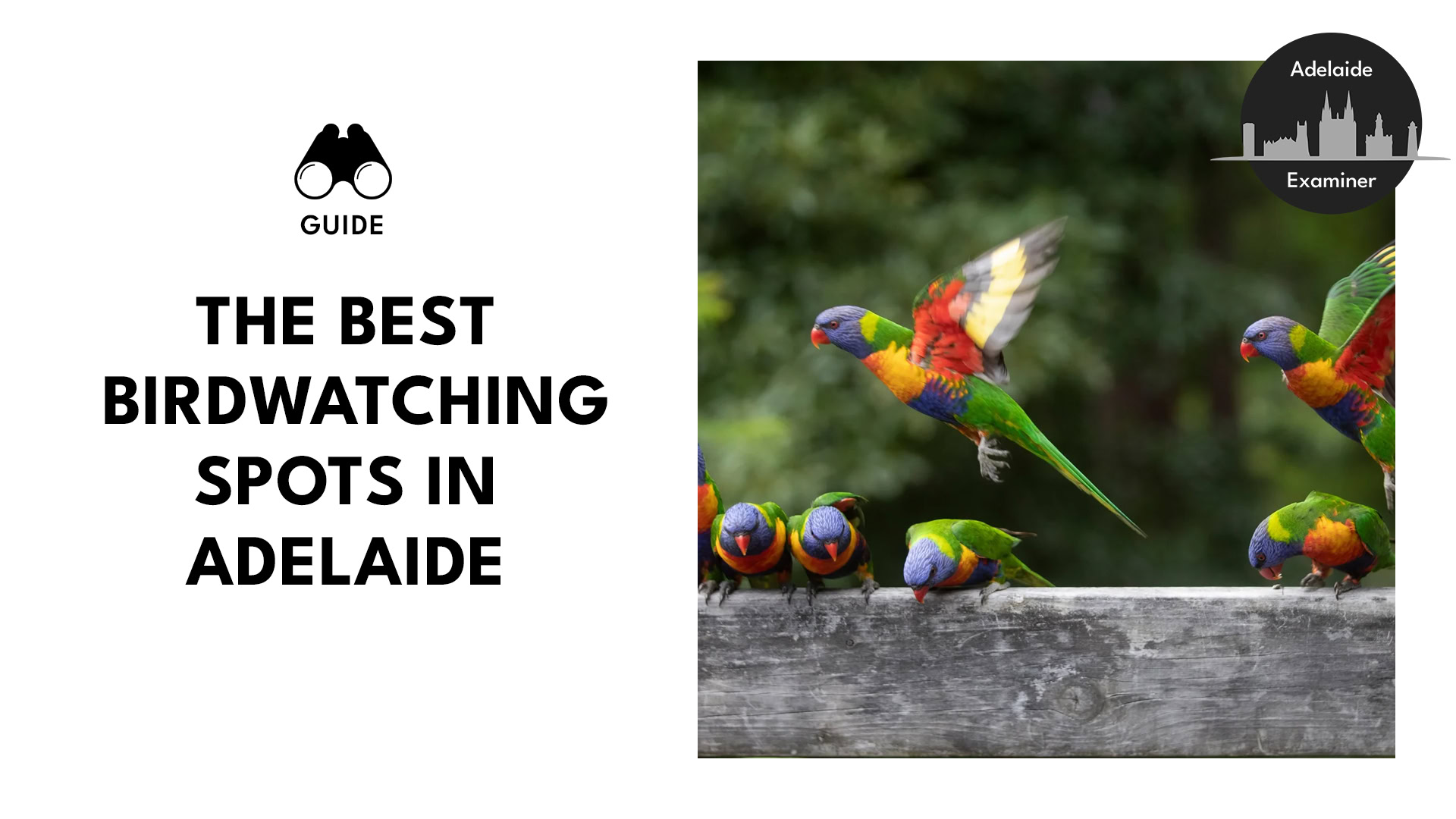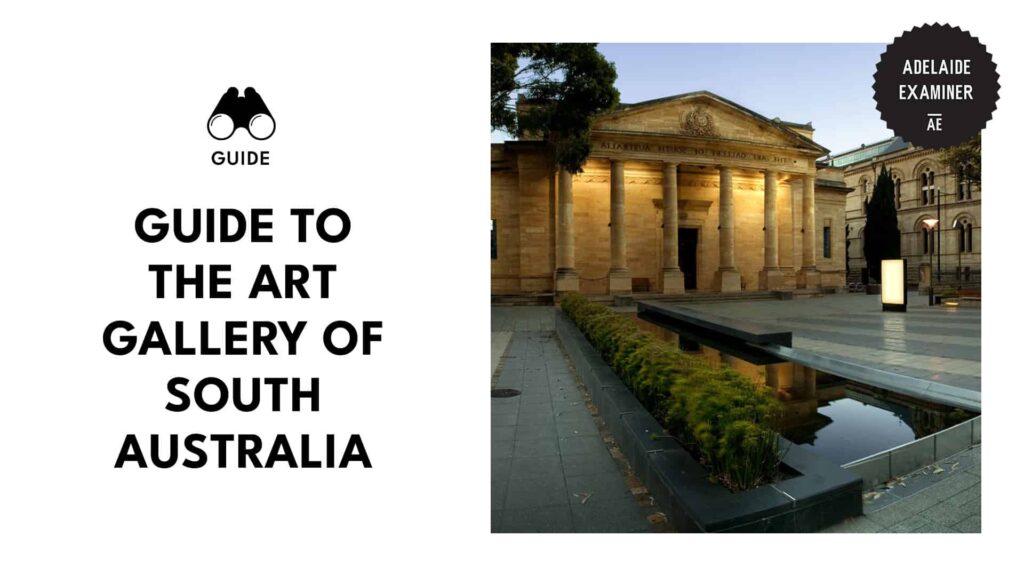
The Best Birdwatching Spots in Adelaide Where Rare and Common Species Sing and Soar
Forget flying to the Amazon for birdwatching. A simple stroll in Adelaide does the trick.
Our city teems with birdlife, so much so that kookaburras are just a window away. Things even go wilder beyond the doorstep, with places like Thompson Beach and Cleland National Park housing rarer species.
If this fact makes you chirp with excitement, prepare to soar up cloud nine in no time. More bird sanctuaries are featured below!
Greenfields Wetland
From paulcav22
Address: Magazine Rd, Dry Creek
Operating Hours: Daily – 24 hours
Website
No matter the season, Greenfields Wetland has birds for days, thanks to its 114 acres of bogs and marshland flora.
As of 2024, 156 recorded species have graced this location. That’s 118 non-passerines and 38 passerines, for those keeping count.
Among the regulars are black swans, pelicans, gray teals, and Australian reed warblers. Rare flyers also frequent here, namely the elusive freckled duck and great crested grebe.
Tips: The best way to enter the wetland is through the northern side via The Watershed Café turn-off on Salisbury Highway. If you’re coming from the south, there’s a southern side on Magazine Road.
In addition, If unfamiliar with the surroundings, simply look for and follow the signs along the accessible paths.
St Kilda Foreshore/Beach
From rom.louise
Google Map
Operating Hours: Daily – 24 hours
Despite the constant buzz from joggers and rollerbladers zipping by, St Kilda Foreshore remains a birdlife haven.
It shouldn’t be a surprise, though, as the locale is a feeding ground for many shorebirds. In fact, over 3,000 foraging banded stilts gather here (usually in the morning), making it quite the sight, bird lover or not.
Unfortunately, we didn’t catch them in action. Instead, black swans and common greenshanks stole the show during our visit. There were also a few red-capped plovers around.
Tip: Don’t forget your kiddos. St Kilda Foreshore’s playground can keep them busy and engaged while you enjoy the feathery scenery.
Port Gawler Beach
From gazjmcmillan
Google Map
Operating Hours: Daily – 24 hours
Port Gawler is just 30 minutes from the CBD, yet it feels like a totally different place. The greenery is divine, and the abundant waters attract a plethora of crabbers, fishers, and of course, birds.
The last time we popped by, fairywrens and red-kneed dotterels strutted along the mangrove forests and coastal shrublands. White-browed scrubwrens also feed here, but we sadly didn’t spot any.
More birds appeared by the salt ponds and tidal channels. Our team was luckier on these parts, as we caught sight of several common greenshanks and black-winged stilts.
Tip: Add spice to your visit by going on a crabbing escapade, which isn’t challenging since the area is packed with blue swimmer crabs. Gathering the crustaceans is even easier if you catch them 1 hour before the low tide.
Thompson Beach
From michellegardnerphotography66
Google Map
Operating Hours: Daily – 24 hours
“Majestic” sums up Thompson Beach perfectly. This is one of Adelaide’s most pristine and tranquil beaches, making it a hub for fishing and bird-watching.
Multiple trails wind through the shoreline here, so spotting the birds can double as an exercise. With this said, you must bring a good pair of walking kicks. Wet and uneven surfaces await at each step.
Along the paths, you’ll probably encounter bar-tailed godwits, red knots, and ruddy turnstones. They usually hang out near tidal creeks, so keep your eye out for this body of water.
Tip: Thompson Beach isn’t as popular as other Adelaide beaches. If you need detailed directions, follow this guide.
Whites Road Wetland
From gazjmcmillan
Google Map
Operating Hours: Daily – 24 hours
Seeing birds at Whites Road Wetland isn’t an uphill battle. The gum-tree-covered trails surrounding the area are well-paved, plus the freshwater bogs attract and host over 100 species.
White-faced herons, black-shouldered kites, dotterels, and crested pigeons are the familiar flyers here. There are also a couple of rarer faces like glossy ibises and wood sandpipers.
Tip: The most convenient way to access the wetland is via Whites Rd off Globe Derby Dr.
Morialta Conservation Park
From jiggys.photography
Address: Morialta Falls Rd, Woodforde
Contact Details: (08) 8336 0901
Operating Hours: Daily – 6:30 am to 7 pm
Website
Nature reigns supreme at Morialta Conservation Park, a year-round gem for bird-watching and all sorts of outdoor enthusiasts.
Most birders go here to spot elusive and declining species, namely the Bassian thrush, yellow-footed antechinus, and yellow-tailed black cockatoo.
You’ll also come across thriving species, with rainbow lorikeets, eastern rosellas, and maned ducks as the most common ones. Bring your binoculars, though. They’re easily spooked.
Tip: There’s no denying that Morialta is a local favorite. To avoid crowds, take the upper-eastern path, specifically Moores Track from Moores Rd or Fox Hill Track from Montacute Rd.
Cleland National Park
From gascoigne.chris
Google Map
Contact Details: (08) 8339 2444
Operating Hours: Daily – 9:30 am to 5 pm
Website
Cleland National Park’s extensive trail networks not only offer breathtaking views of the Adelaide Hills but also showcase a myriad of birds in their natural habitats.
What we usually stumble upon here include the likes of maned ducks and Pacific black ducks. Naturally, you’ll find them waddling on the bodies of water.
Beyond the regulars, the park welcomes migratory guests such as the kaleidoscopic swift parrot and princess parrot. The pensive tawny frogmouth also roam the area, which you’ll usually spot on the open woodland sections.
Tip: Newbie birdwatchers should try joining the park’s Breakfast with Birds program. This is a tour wherein you’ll learn a thing or two about bird species, from the food they eat to their unique quirks.
Hallett Cove Conservation Park
From scenebymoi
Google Map
Contact Details: +61881309050
Operating Hours: Daily – 24 hours
Website
Adding Hallett Cove Conservation Park is a no-brainer. Its glacial pavement from the Permian period makes it one of Adelaide’s most breathtaking birdwatching hotbeds.
Speaking of birds, honeyeaters and nankeen kestrels are what you’ll regularly run into here. The former is easier to spot due to its sweet and easily recognizable tunes.
There’s also a chance you’ll spot families of quails. These feathered fluffballs enjoy chilling on the dune scrubs, so try venturing beyond the paved paths.
Tip: Check out the rock pools after you’re done birdwatching. They’re packed with urchins, crabs, and sea stars.
Scott Creek Conservation Park
From birderlifesa
Address: Dorset Vale Road or Scott Creek Road, Scott Creek
Contact Details: (08) 8130 9050
Operating Hours: Daily – 24 hours
Website
With over 125 bird species around, Scott Creek Conservation Park is a true birdlife sanctuary.
This isn’t a shocker due to the area’s diverse vegetation, providing a lifeline for honeyeaters, brown thornbills, Australian magpies, and willie wagtails.
Some avian visitors have also been flying and perching around the park. Professional birdwatchers have reported sightings of crimson rosellas, rainbow lorikeets, fairywrens, and wattlebirds.
Tip: Those intending to explore the park using the fire track network should stay within the designated walking areas. Going off-the-grid sounds thrilling, but note that it can be dangerous due to slippery, uneven, and steep zones.
Coorong National Park
From offgridwithmatthias
Google Map
Contact Details: +61885751200
Operating Hours: Daily – 24 hours
Website
Coorong National Park has never disappointed our team. It’s just a short hop from Adelaide, features top-notch kayaking spots, and serves as a habitat for more than 200 bird species.
We dropped in here last June and bumped into a handful of red-necked stints and sharp-tailed sandpipers. There were also numerous Caspian terns, Cape Barren gooses, and Australian pelicans, most of which were nesting.
Tip: The best time to visit is in summer, especially if you’re into waterbirds. Just remember to wear clothing that blends with the wetland environment.
Flinders Ranges
From flindersrangesandoutback
Google Map
Operating Hours: Daily – 24 hours
If the Flinders Ranges‘ dramatic cliffs, rugged craters, and Mars-like landscapes don’t strike you with wonder, the area’s birds might.
The rocky outcrops are abundant in birdlife. Think quails, emus, parrots, and crested pigeons.
You can take things up a notch by waiting for the nocturnal birds to come out, particularly the tawny frogmouth and Australian owlet-nightjar. Watching them can even be more awe-inspiring if you go out on a starlit night.
Tip: The temperatures here are no joke. Make sure to check the weather forecast before hitting the road.
Gluepot Reserve
sandyhorne4093
Google Map
Contact Details: (08) 8892 8600
Website
Gluepot Reserve’s expanse of mallee scrubland and open woodlands is Insta-worthy. It’s also a biodiversity hotspot.
Among its treasures are 18 nationally threatened bird species. The list consists of mallee ringnecks, Australasian grebes, masked woodswallows, fairywrens, and many more.
To top it off, the 54,390-hectare paradise has around 12 types of bats and 53 species of reptiles that are all available for observation.
Tips: Note that there are fees for entry: $5 per vehicle per day for day visitors and $15 per vehicle per night for camping. In addition, be sure to bring all your own supplies, including water, food, and fuel.
Black Hill Conservation Park
From urlaubsknipser
Address: 115 Maryvale Rd, Athelstone
Contact Details: (08) 8336 0901
Operating Hours: Mon to Fri – 9 am to 4:30 pm
Website
There’s much to marvel at in Black Hill Conservation Park, from the pristine rolling landscapes to the low sheoaks that flaunt rusty-black hues come summertime. For us, though, it’s the park’s feathery residents that soar above.
For starters, a variety of native species such as thornbills, wattlebirds, finches, lorikeets, and treecreepers serenade the place. Several birds of prey also patrol the skies, with wedge-tailed eagles as the most common hunters.
Tip: Don’t forget your picnic essentials. The park boasts a plethora of picnic spots where you can unwind and admire the wildlife.





